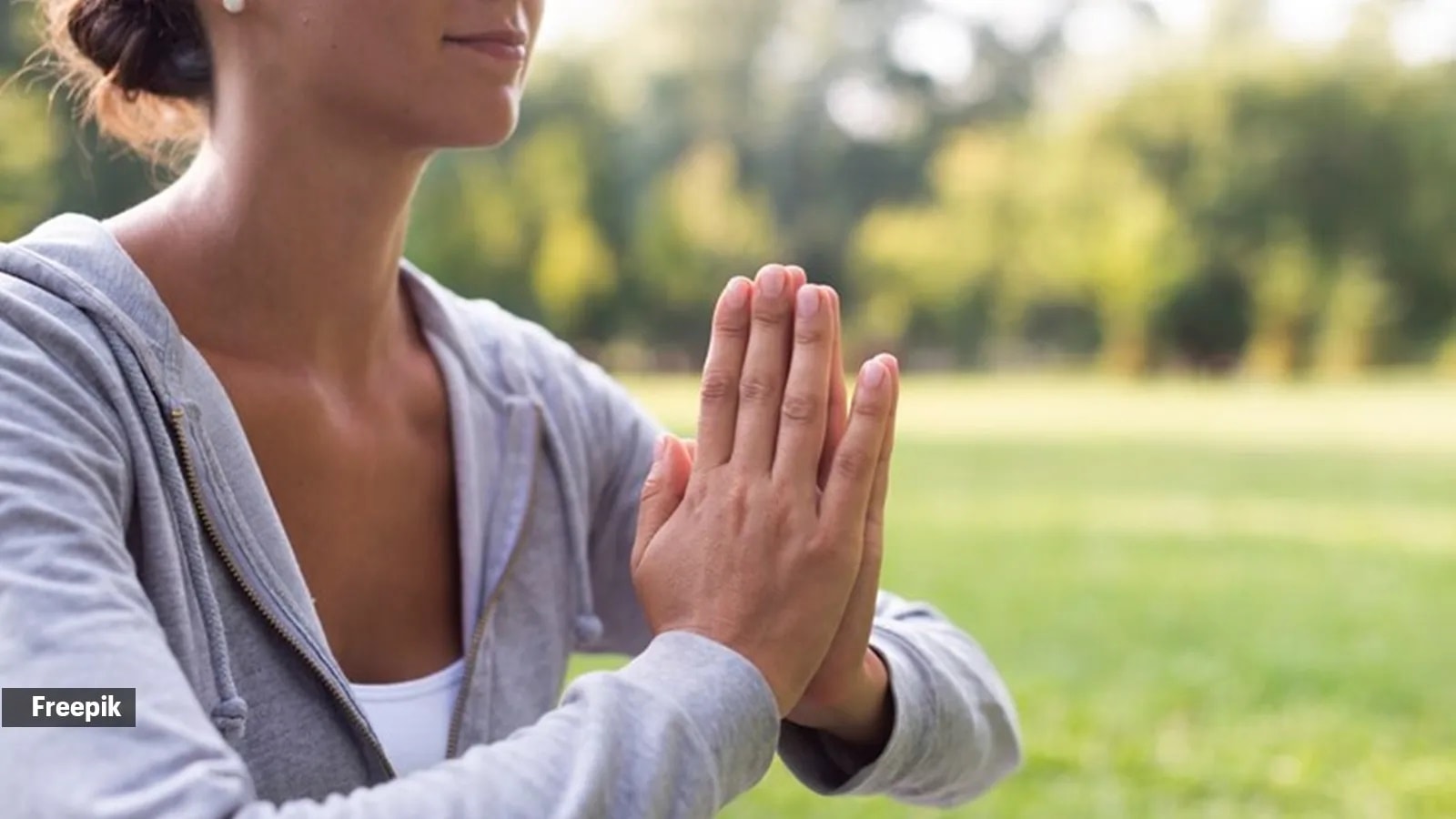📣 For more lifestyle news, click here to join our WhatsApp Channel and also follow us on Instagram
Neuroscientist shares brain scans, claims practising even a single Bhramari Pranayama breath is great for focus and concentration; we verify
It should be done in a relaxed and controlled manner. Overdoing it can lead to dizziness or headaches.
 How does the practice help? (Source: Freepik)
How does the practice help? (Source: Freepik)Neuroscientist Dr Sweta Adatia recently shared her insights from two brain scans conducted before and after doing Bhramari Pranayama, or the humming bee breath. According to her, practising even a single Bhramari Pranayama increased her beta (waves for concentration and focus) by 10 times, along with Alpha waves — known to induce calmness. But does it really work that way?
Before we answer the question, let’s understand Bhramari Pranayama, which entails producing a humming sound while breathing out, consequently creating a vibration in the head. “This form of breathing is known to have a calming effect on the mind and body. The process can activate the parasympathetic nervous system, helping to reduce stress and anxiety,” said Dr Kunal Bahrani, clinical director and HOD-neurology, Marengo Asia Hospitals, Faridabad.
How is it performed?
Sit up straight and keep your eyes closed. Take your thumbs to your ears in a way that blocks out all kinds of noise. Place your index fingers on the cartilage between the cheek and the ears. As you breathe in and out, gently press the cartilage and hum loudly.
When performed regularly, according to Dr Bahrani, Bhramari Pranayama helps to
Calm the mind – The humming sound (like a bee) stimulates the vagus nerve, promoting relaxation and mental clarity.
Reduce stress and anxiety – It helps lower cortisol levels and induces a sense of tranquillity.
Improve focus – The focus required for the breath and the humming sound helps to enhance concentration and mindfulness.
Enhance respiratory function – It increases lung capacity and improves breathing patterns by engaging the diaphragm and chest.
Promote better sleep – Regular practice can help reduce insomnia by calming the nervous system.
Who is it for?
People experiencing stress or anxiety – It calms the nervous system.
Individuals with sleep disorders – Helps in improving sleep quality.
Those needing better concentration – Boost mental clarity and focus.
Anyone seeking to improve their emotional well-being – According to Dr Bahrani, the technique is emotionally soothing and supportive of mental health.
What to note from a medical point of view?
 Here’s what this breathing practice does to the mind (Source: Freepik)
Here’s what this breathing practice does to the mind (Source: Freepik)
From a medical perspective, a single Bhramari Pranayama is generally safe for most people, said Dr Bahrani. However, some critical points to consider are:
Consultation with a doctor
Dr Bahrani noted that individuals with respiratory issues (such as asthma) or heart conditions should consult a healthcare provider before practicing Pranayama. Consultant neurologist Dr Sudhir Kumar, Apollo Hospitals, Hyderabad, noted that research backing these observations is of low quality and done on very few subjects. “More studies, including randomised controlled trials on a larger number of subjects, are needed to confirm these preliminary observations. Research is also needed to unravel the underlying mechanisms responsible for the beneficial effects of Bhramari Pranayama on the brain and mind,” said Dr Kumar.
Avoid excessive strain
It should be done in a relaxed and controlled manner. Overdoing it can lead to dizziness or headaches.
Proper posture is essential
Ensure that the body is seated comfortably and the spine is straight to avoid any discomfort during practice.
DISCLAIMER: This article is based on information from the public domain and/or the experts we spoke to. Always consult your health practitioner before starting any routine.
📣 For more lifestyle news, click here to join our WhatsApp Channel and also follow us on Instagram


- 01
- 02
- 03
- 04
- 05

























